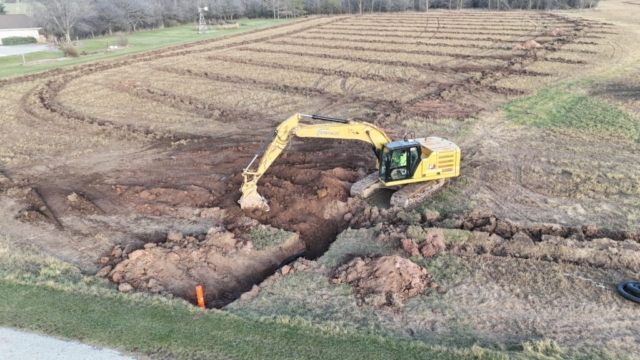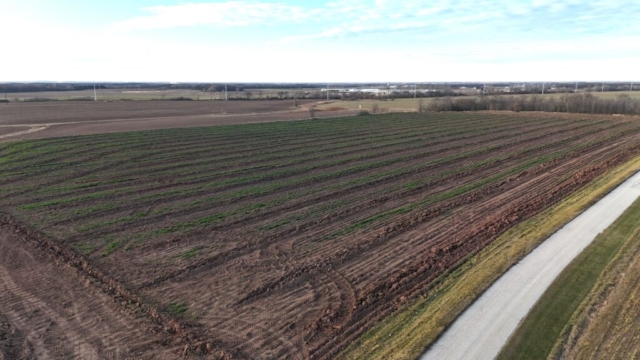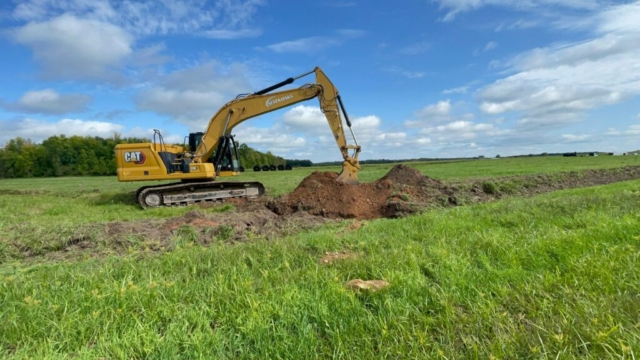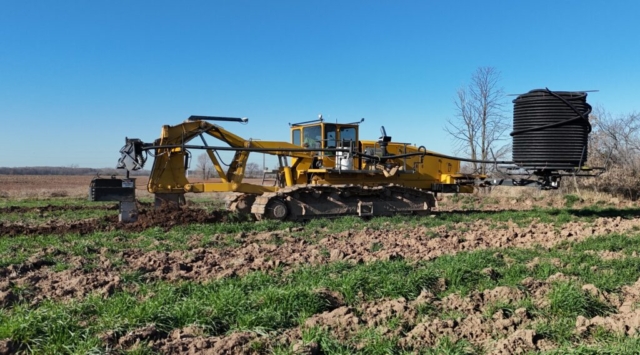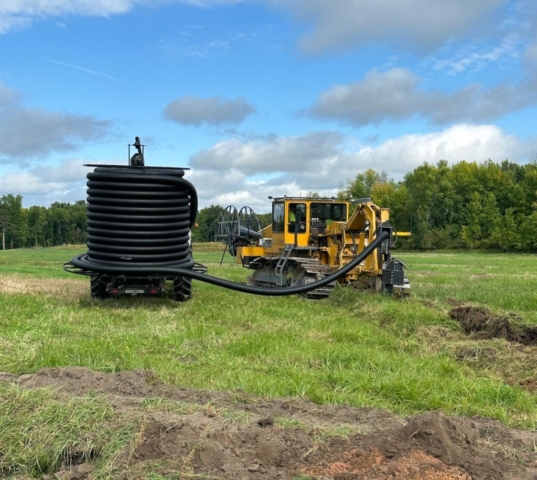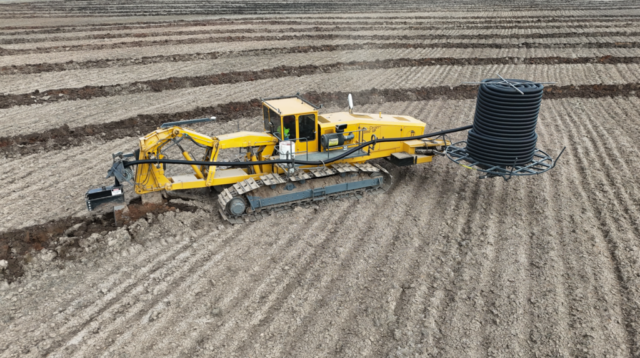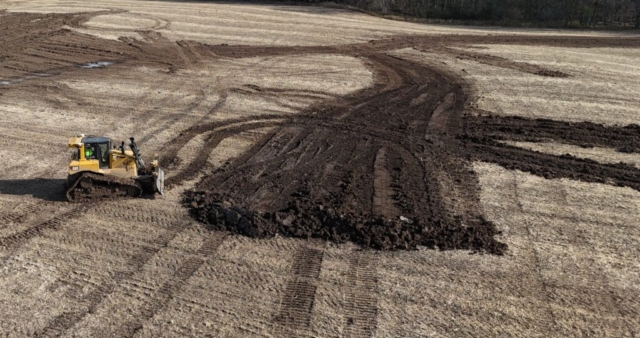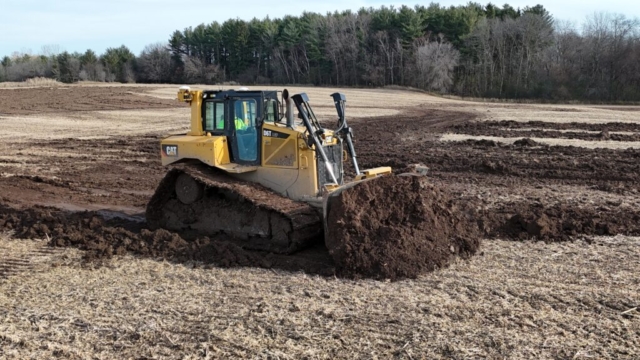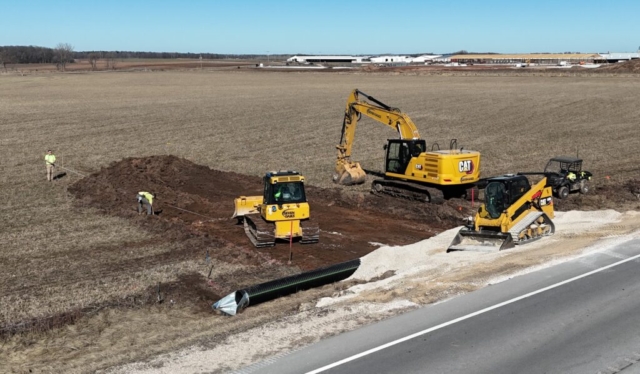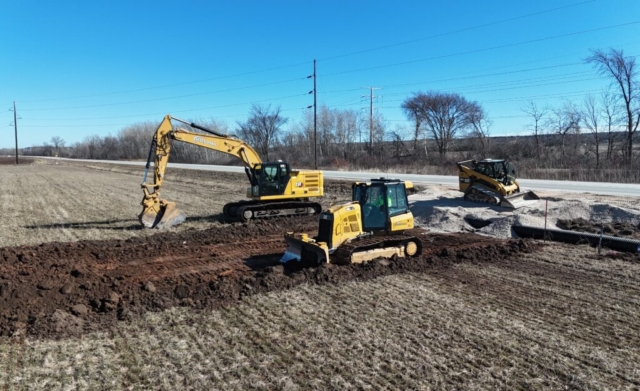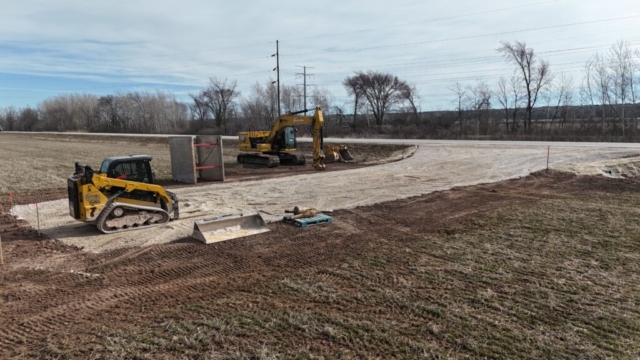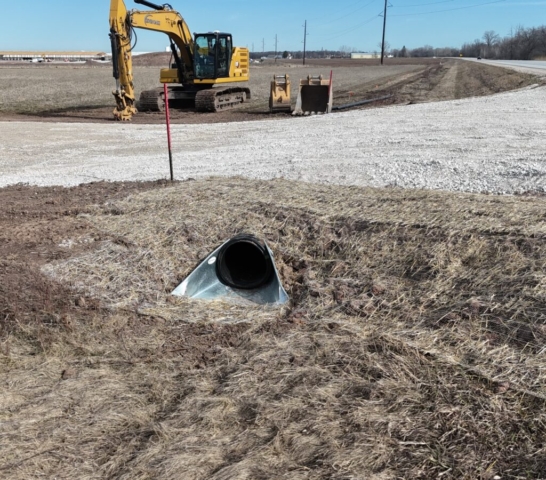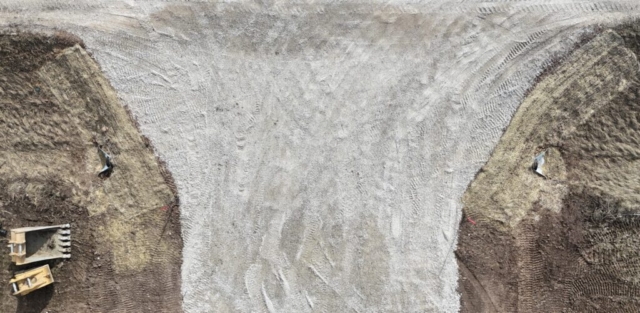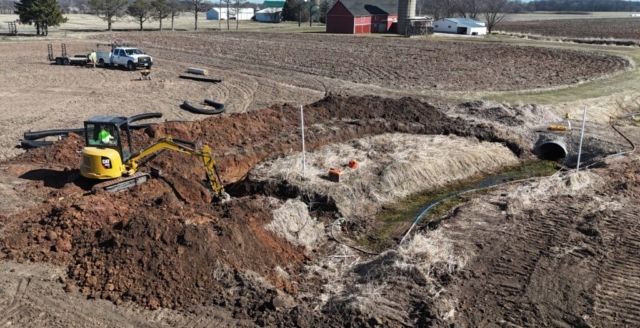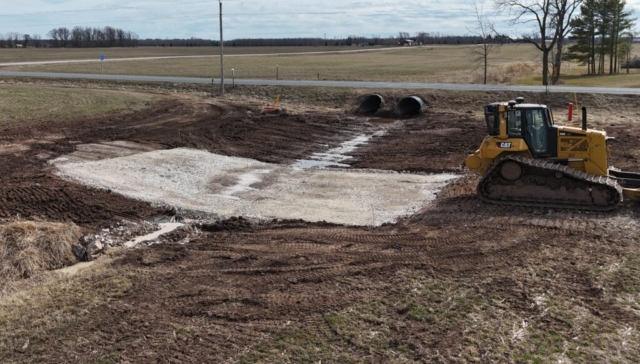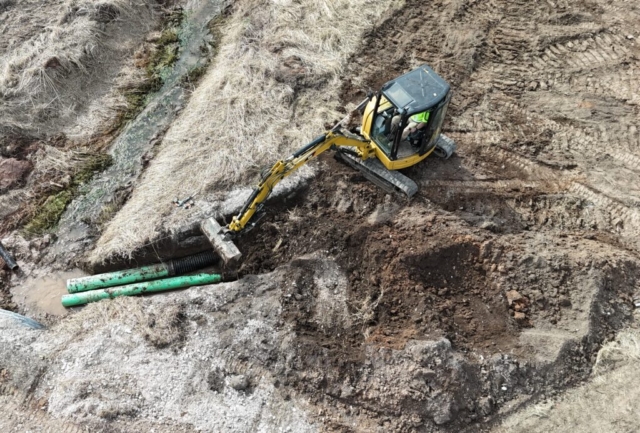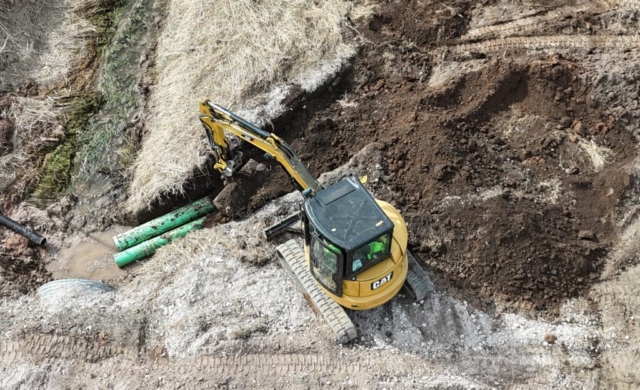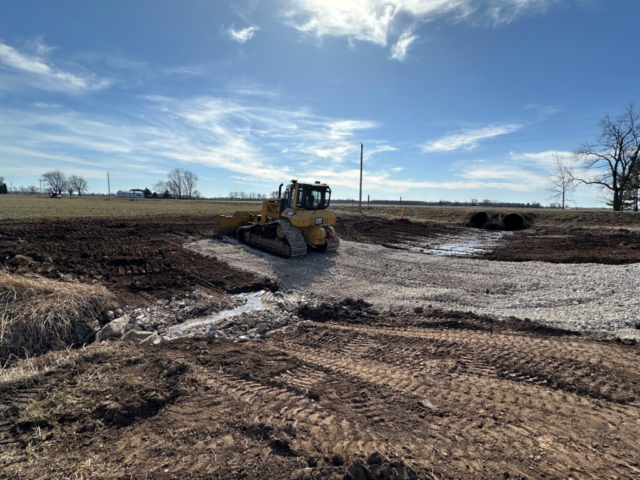Drain Tiling
Drain tiling, also known as subsurface drainage, is a method used to manage excess moisture in the soil. It involves installing a network of perforated pipes underground in a field, which collect excess water and channel it away from the root zone of crops. This can help improve crop growth and yields, as well as reduce the risk of disease and pests.
Drain tiling can be beneficial in areas with high water tables or heavy clay soils that retain moisture for long periods of time. It can also help prevent soil erosion and reduce the risk of flooding. Additionally, it can improve the overall health of the soil by reducing the levels of excess water and oxygen, which can lead to anaerobic conditions and the growth of harmful bacteria.
Drain Tiling benefits include:
- Increasing profitability per acre.
- Less compaction of soil
- Better soil Structure
- Allows more days per year for field operations
- More Yields with same or less inputs
Excavation
Excavation is the process of removing earth, rock, or other materials from a site using tools and equipment. It is an important step in the construction process, as it prepares the land for building foundations, trenches, and other structures. Excavation can also be used for mining, land clearing, and other purposes.
There are several types of excavation, including:
- Swales/Ditch excavation: This is the process of digging a narrow and deep hole, typically for the purpose of installing underground utilities such as pipes or cables.
- Foundation excavation: This is the process of digging a hole to the appropriate depth and shape to support a building’s foundation.
- Bulk excavation: This is the process of removing a large amount of soil or rock from a site, often to create a level building pad or prepare for land development.
It is important to hire a professional excavation contractor who has the experience and equipment to safely and efficiently complete the job.

